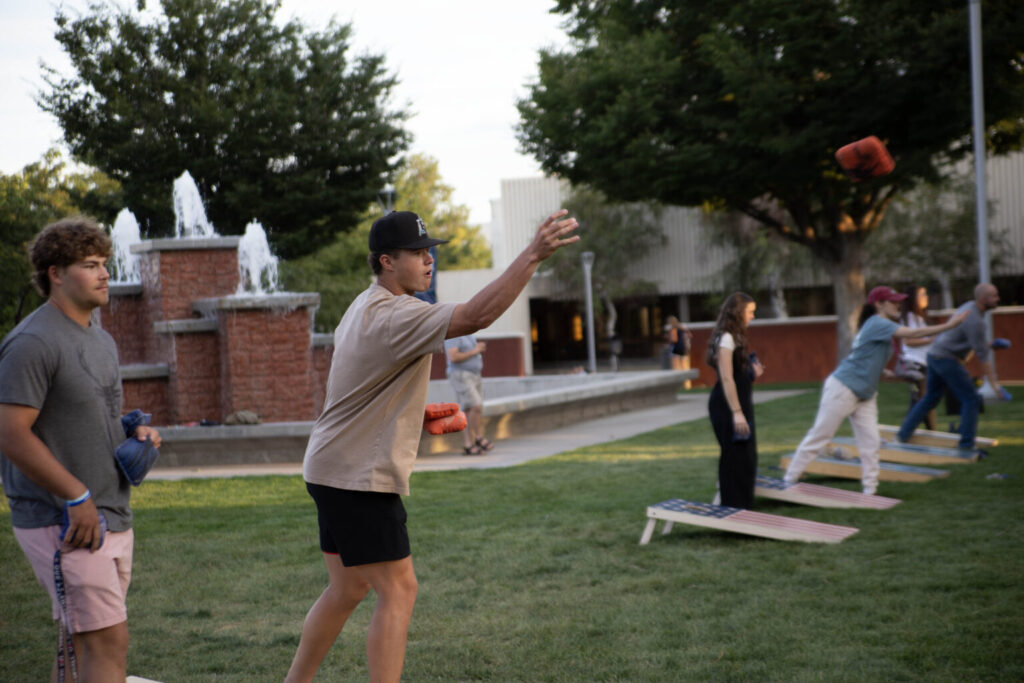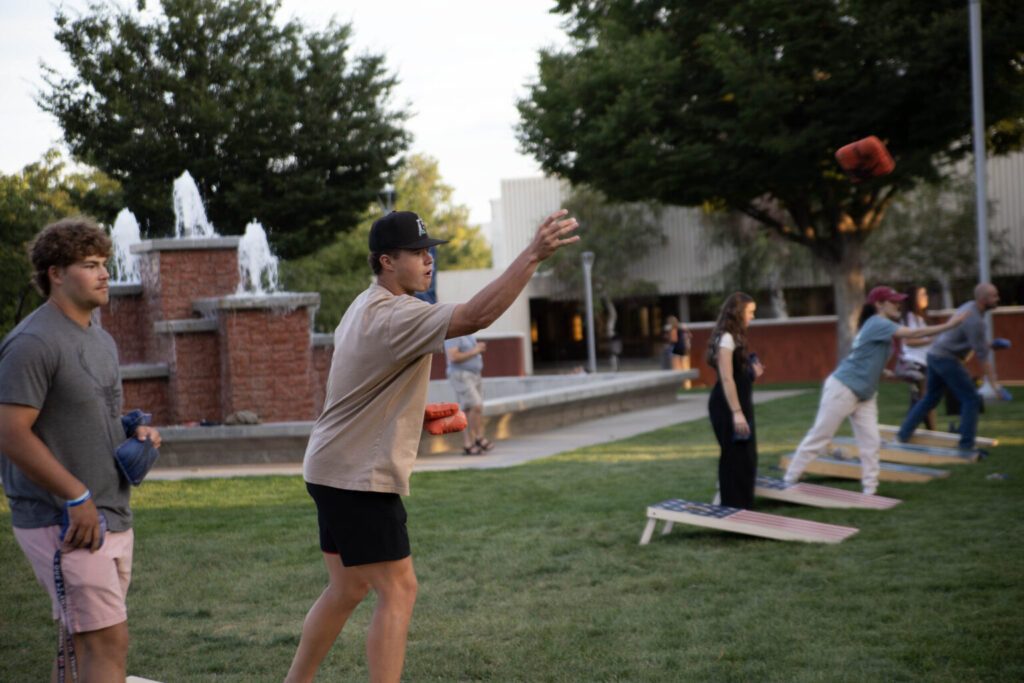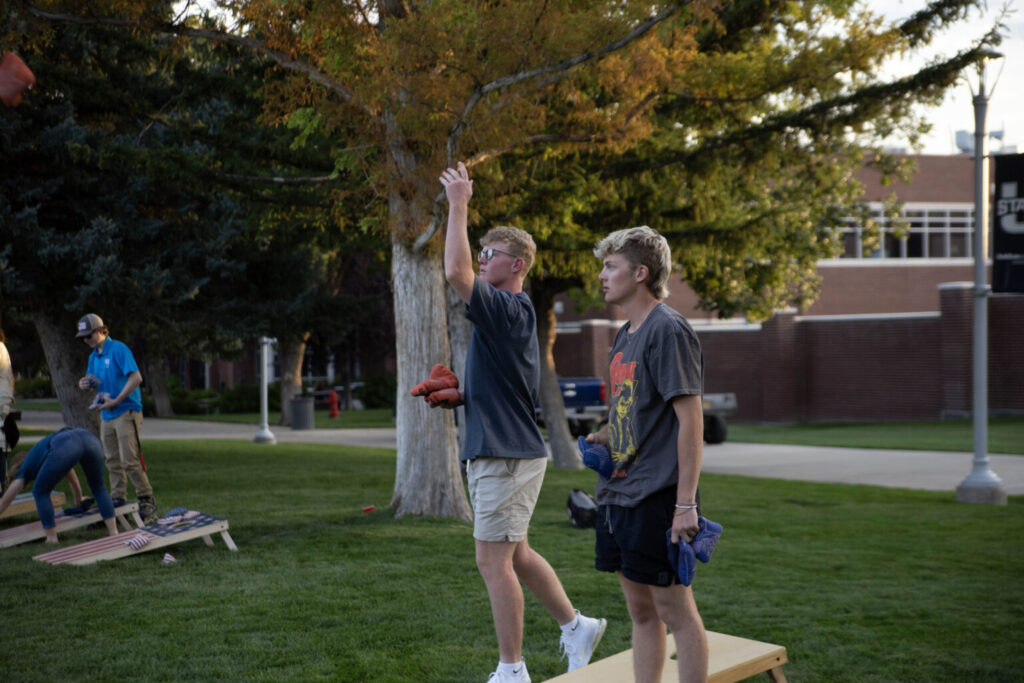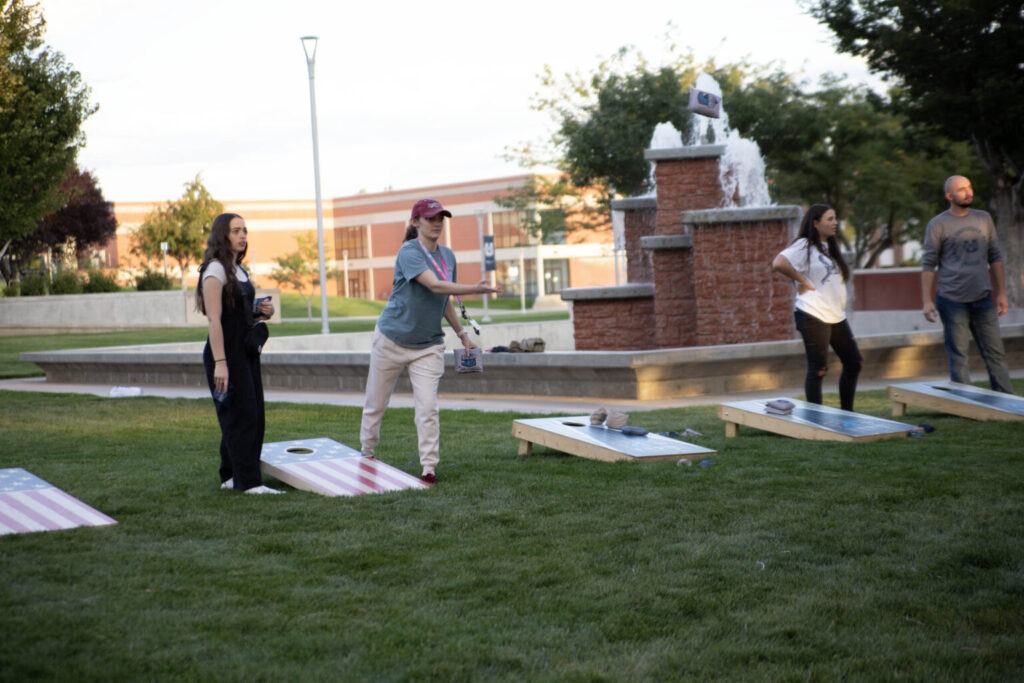Cornhole’s growing popularity in America




In recent years, an unassuming backyard pastime has transformed into a national sensation: cornhole. What was once a casual activity enjoyed at family gatherings and tailgate parties has become a competitive sport with a dedicated following. The rise of cornhole, often dubbed “bean bag toss,” is a fascinating journey that highlights the way Americans embrace tradition while infusing it with innovation and a dash of friendly competition.
Cornhole traces its roots back to the Midwest, particularly to the farmlands of Ohio and Kentucky. Legend has it that the game was invented by farmers using empty grain bags filled with corn kernels as improvised bean bags. The objective was simple: toss the bags through a hole cut into a wooden board. Over the years, the game evolved, with players adopting different rules and scoring systems.
The game’s evolution from a rustic pastime to a mainstream sensation began in the early 2000s. Backyard enthusiasts started organizing informal tournaments, often fueled by cold beverages and friendly banter. The simplicity of the game, requiring only a set of boards and a few bean bags, made it accessible to people of all ages and backgrounds.
Cornhole’s appeal also lies in its social nature. Whether it’s a backyard barbecue, a college tailgate party, or a neighborhood gathering, cornhole brings people together. It’s a game that transcends generations, making it equally enjoyable for grandparents and grandchildren. The camaraderie and excitement generated by a heated cornhole match are hard to replicate in other pastimes.
As cornhole’s popularity continued to grow, so did the level of competition. Local tournaments turned into regional championships, and enthusiasts began forming leagues. Today, there are professional cornhole players who compete on a national stage. The American Cornhole League (ACL) and the National Cornhole Federation (NCF) have become the premier organizations overseeing the sport, with televised events drawing substantial audiences.
Professional cornhole players, often sponsored by major brands, practice for hours each day to hone their skills. They focus on perfecting their throws, developing strategies, and even studying the physics of cornhole to gain a competitive edge. This level of dedication has elevated cornhole from a casual backyard game to a recognized sport with its own stars and fanbase.
Cornhole’s surge in popularity has also spawned a cottage industry of boards, bags, and accessories. Customized boards with intricate designs and personalized bean bags have become sought-after items. These boards are more than just game equipment; they’re pieces of art that reflect the culture and personality of the players.
Moreover, cornhole has left its mark on popular culture. It has been featured in movies and television shows, and many bars and restaurants now host cornhole leagues and tournaments. The game has even made its way into video games, further cementing its status as a cultural phenomenon.
The Future of Cornhole
As cornhole continues to rise in popularity, its future seems bright. The sport’s inclusivity, accessibility, and adaptability have contributed to its success. It’s a game that can be enjoyed by anyone, anywhere, making it a perfect fit for the ever-changing landscape of leisure activities.
In conclusion, cornhole’s journey from a simple backyard game to a competitive sport with a growing fanbase is a testament to its enduring appeal. Its ability to bring people together, foster friendly competition, and create a sense of community has made it a beloved American tradition. Whether you’re a seasoned pro or a casual player, cornhole offers a unique blend of nostalgia and excitement that continues to captivate hearts and backyards across the nation. So, grab your bean bags and get ready to toss; cornhole is here to stay, and its rise is far from over.




